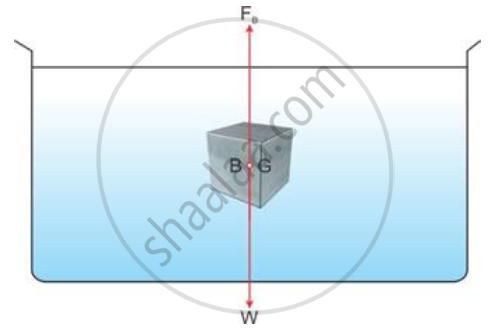Advertisements
Advertisements
प्रश्न
A body is held immersed in a liquid. (i) Name the two forces acting on the body and draw a diagram to show these forces. (ii) State how the magnitudes of two forces mentioned in part (i) determine whether the body will float or sink in liquid when it is released. (iii) What is the net force on the body if it (a) sinks and (b) floats?
उत्तर
(i) Two forces acting on the body are as listed below:
(a) Weight of the body (downwards)
(b) Upthrust of the liquid (upwards)

(ii) If the weight of the body is greater than the upthrust acting on it, the body will sink
If the weight of the body is equal to or less than the upthrust acting on it, the body will float.
(iii) (a) The net force acting on the body when it sinks is body's own weight.
(b) The net force acting on the body when it floats is the upthrust due to the liquid.
APPEARS IN
संबंधित प्रश्न
State the principle of floatation.
A solid iron ball of mass 500 g is dropped in mercury contained in a beaker. (a) Will the ball float or sink? Give reasons. (b) What will be the apparent weight of the ball?
A body of weight W is floating in a liquid. Its apparent weight will be
A test tube weighing 17 gf, floats in alcohol to the level P. When the test tube is made to float in water to the level P, 3 gf of the lead shots are added in it. find the R.D. of alcohol.
Name an instrument based on this principle. State two uses of the instrument that you describe.
State the principle of floatation. What can you say about the average density of a ship floating on water?
How does an object’s density determine whether the object will sink or float in water?
State the laws of flotation.
Where do we use lactometers?
Name different types of Hydrometers with their applications.
